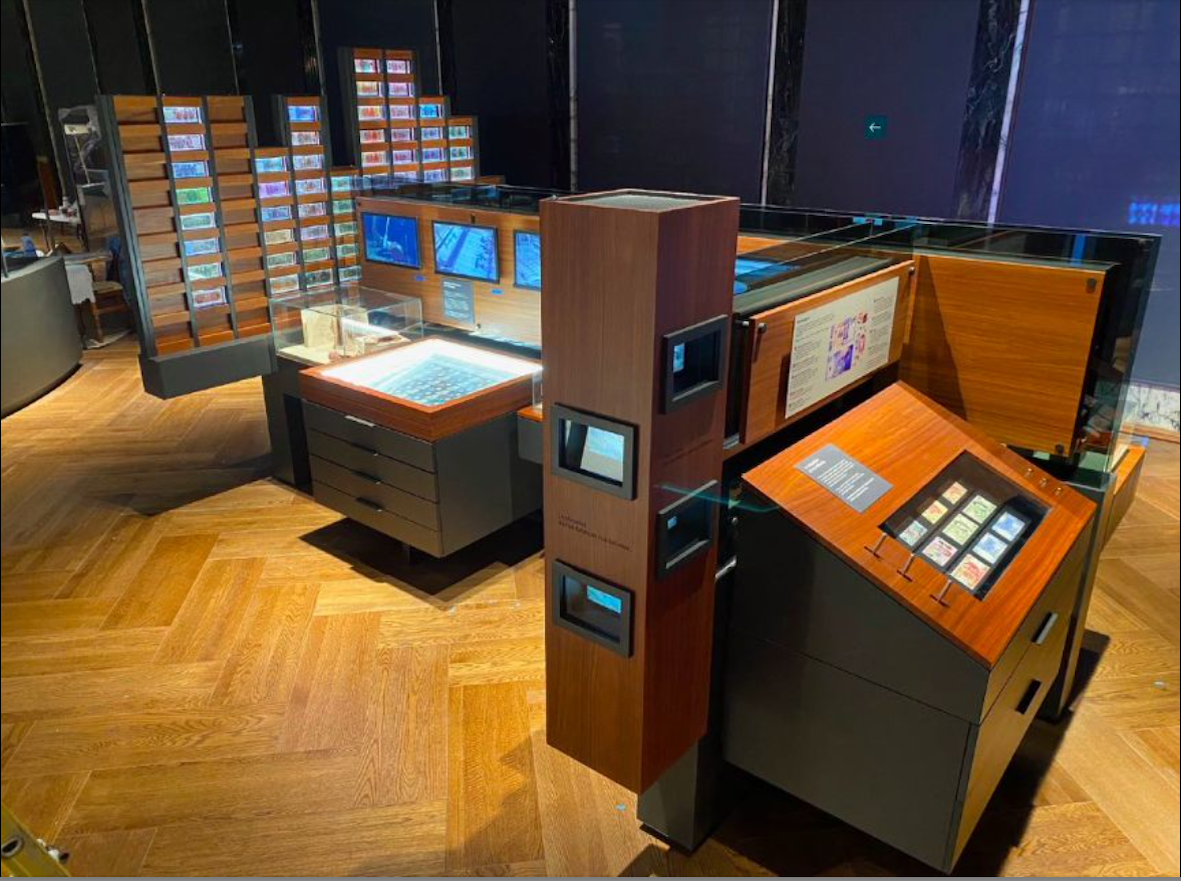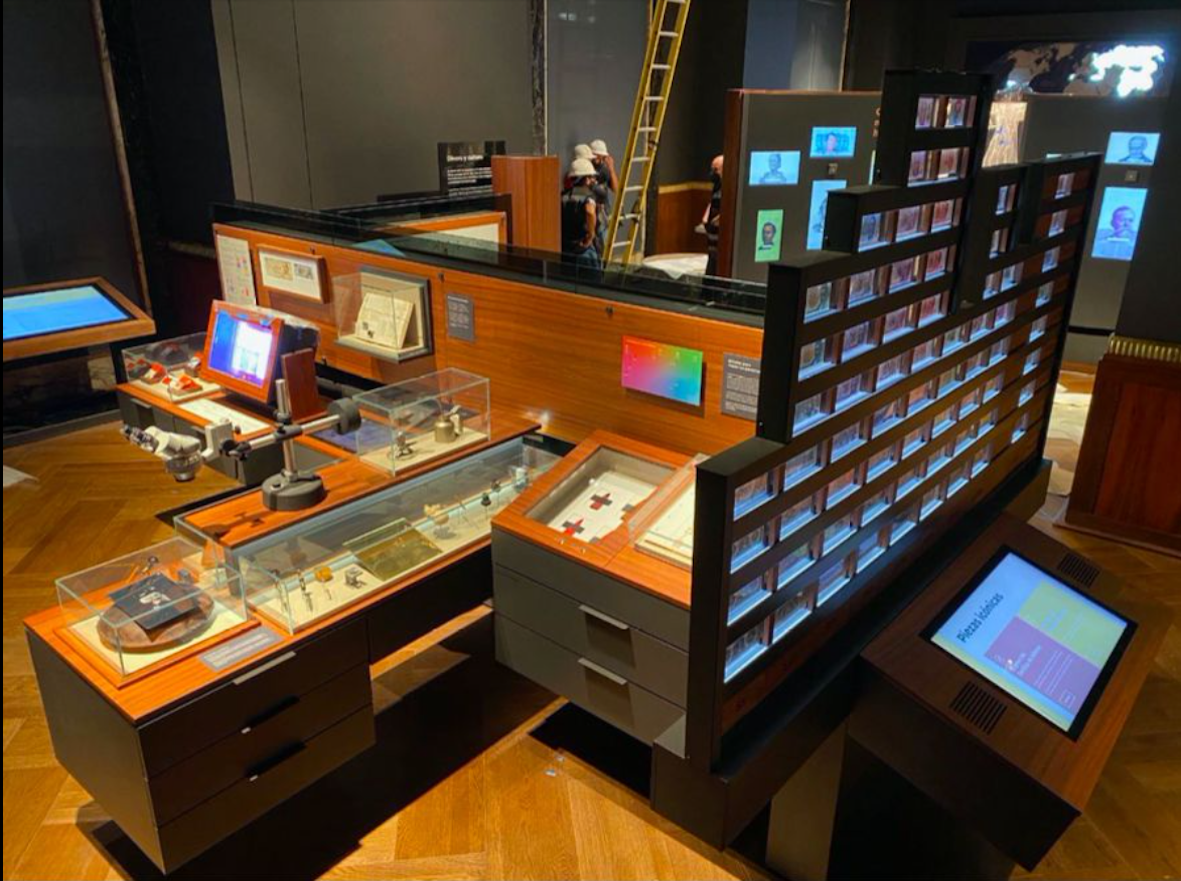EL DISEÑO DEL DINERO
Museo
Banco de Mexico
RIWA Arquitectura
Taller de Museografía
MIDE
Banco de Mexico
RIWA Arquitectura
Taller de Museografía
MIDE
With no intrinsic value, the design of money is tied to the creation of trust. How does a piece of printed paper turn into a medium of exchange with an assigned value to which we all subscribe?
Identity, Accessibility, Authenticity, and Fabrication served as the main themes through which we invite the visitors to explore how we come to trust the value of money.
The process involved extensive visits to the factory to understand all the steps required to put money into circulation, interviews with engravers and designers both current and retired, and a deep dive into the bank’s archive to select the tools that would better represent the technological changes that have influenced the design of money. Conversations with the heads of every department in the factory gave the needed knowledge to translate
IDENTITY
The design of currency takes it from being a generic object of payment to becoming a symbol of our society by carefully considering the visual elements that best reflect its values.
A double-sided chart organized according to their denomination allows us to see changes in color, size, type, and historical figures through time.
Iconic bills and bill families are highlighted, and more about their story can be learned through interviews with designers and engravers, giving us an intimate insight into the design process.
The process diary of one of the most prolific designers the bank has had is digitized and displayed, taking us through a deep design journey.
Archival drawers hold sketches, engravings, and vignettes, and tools of the trade are on display.
ACCESSIBILITY
Considerations such as the structure, color, and size of banknotes facilitate the use of our currency. Added tactile features and tools that aid those with visual impairments make accessibility a key component in making our money trustworthy.
Double-sided display with different composition proposals for banknotes that did not make it into circulation.
A banknote is broken up into the elements that make it up, each engraved into a sliding plate: type, numeral, background, character, allowing visitors to change its arrangement and notice how legibility changes.
A tool created for the visually impaired is displayed in use.
Ink and color samples are displayed under natural and ultra-violet light.
AUTHENTICITY
Counterfeiting compromises society's trust in money. Security elements must be constantly renewed to make it hard to falsify. Therefore currency design is continuously innovating.
Authentic and counterfeit bills, old and new, are placed side to side in a lightbox outfitted with white light, ultraviolet light, a magnifying lens, and a mirror. Turning on different lights lets the visitor appreciate the security features of genuine bills and the shortcomings of the counterfeit.
FABRICATION
A wide variety of disciplines and staged processes come together when crafting aesthetic, durable, and trustworthy money. Visitors are invited to witness such processes by looking through factory videos and raw material samples.
A vertical cabinet holds printing plates exemplifying consecutive printing stages: offset, intaglio, screen printing, letterpress, and printed sheets.
Close-ups videos of the factory machines in motion on a loop illustrate the stageS.
The machines used to test the durability of money are on display, stretching and wrinkling bills non-stop.
Archival drawers hold samples and support material.
Live footage from the factory is streamed through little “peep-holes” where we can see the factory in real-time, never sleeping.
Identity, Accessibility, Authenticity, and Fabrication served as the main themes through which we invite the visitors to explore how we come to trust the value of money.
The process involved extensive visits to the factory to understand all the steps required to put money into circulation, interviews with engravers and designers both current and retired, and a deep dive into the bank’s archive to select the tools that would better represent the technological changes that have influenced the design of money. Conversations with the heads of every department in the factory gave the needed knowledge to translate
IDENTITY
The design of currency takes it from being a generic object of payment to becoming a symbol of our society by carefully considering the visual elements that best reflect its values.
A double-sided chart organized according to their denomination allows us to see changes in color, size, type, and historical figures through time.
Iconic bills and bill families are highlighted, and more about their story can be learned through interviews with designers and engravers, giving us an intimate insight into the design process.
The process diary of one of the most prolific designers the bank has had is digitized and displayed, taking us through a deep design journey.
Archival drawers hold sketches, engravings, and vignettes, and tools of the trade are on display.
ACCESSIBILITY
Considerations such as the structure, color, and size of banknotes facilitate the use of our currency. Added tactile features and tools that aid those with visual impairments make accessibility a key component in making our money trustworthy.
Double-sided display with different composition proposals for banknotes that did not make it into circulation.
A banknote is broken up into the elements that make it up, each engraved into a sliding plate: type, numeral, background, character, allowing visitors to change its arrangement and notice how legibility changes.
A tool created for the visually impaired is displayed in use.
Ink and color samples are displayed under natural and ultra-violet light.
AUTHENTICITY
Counterfeiting compromises society's trust in money. Security elements must be constantly renewed to make it hard to falsify. Therefore currency design is continuously innovating.
Authentic and counterfeit bills, old and new, are placed side to side in a lightbox outfitted with white light, ultraviolet light, a magnifying lens, and a mirror. Turning on different lights lets the visitor appreciate the security features of genuine bills and the shortcomings of the counterfeit.
FABRICATION
A wide variety of disciplines and staged processes come together when crafting aesthetic, durable, and trustworthy money. Visitors are invited to witness such processes by looking through factory videos and raw material samples.
A vertical cabinet holds printing plates exemplifying consecutive printing stages: offset, intaglio, screen printing, letterpress, and printed sheets.
Close-ups videos of the factory machines in motion on a loop illustrate the stageS.
The machines used to test the durability of money are on display, stretching and wrinkling bills non-stop.
Archival drawers hold samples and support material.
Live footage from the factory is streamed through little “peep-holes” where we can see the factory in real-time, never sleeping.





